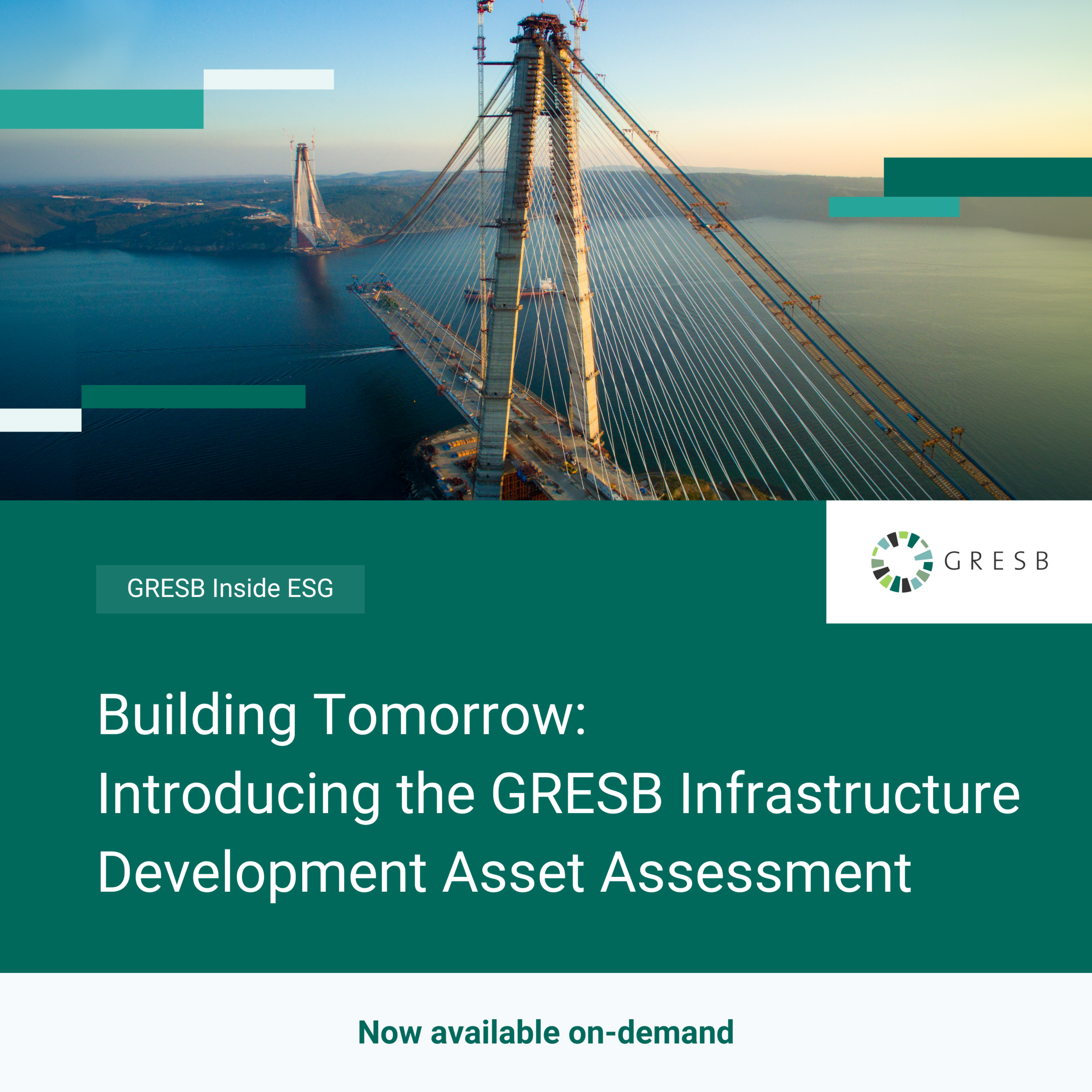In today’s infrastructure industry, ESG isn’t just a consideration – it’s a critical factor driving the agenda for sustainable and responsible investment. GRESB was originally founded in 2009 as a mission-driven and industry-led organization that provides actionable and transparent ESG data to financial markets with a focus on real estate. However, as ESG gained prominence in the infrastructure landscape, GRESB quickly expanded its scope to also cover this sector.
For years, GRESB has offered a robust standard to collect ESG data in the infrastructure space via the Fund Assessment and the Asset Assessment, assisting managers and investors to access key insights into their sustainability performance. However, until recently, the realm of infrastructure in development remained outside the purview of the Assessments.
As the importance of standardizing ESG data and reporting for infrastructure projects continues to rise, GRESB members found themselves in need of an assessment tailored for assets in development – one that could effectively capture their ESG efforts and performance in the development phase.
The GRESB Development Asset Standard
In response to the evolving needs of the industry, GRESB introduced the new Development Asset Standard, a tailored solution designed to meet the sector’s lifecycle intricacies. The new Standard was developed through external user research that involved the collection of direct feedback from the market, as well as internal research into best practices from international frameworks such as the IFC Performance Standards and BREEAM Infrastructure Projects. The Standard was then reviewed in consultation with the Infrastructure Standards Committee, securing full endorsement from the group and approval by the independent GRESB Foundation Board, comprised of representatives from GRESB members and partners.
GRESB as the repository of development projects ESG data
Championing ESG data initiatives from the pre-operational phase is paramount, as this approach establishes the foundation for responsible and sustainable practices. Collecting ESG data in the early stages of development can aid ESG integration in investment decision-making and maximize the impact of new projects with full awareness of the potential risks and opportunities that can arise. This is extremely relevant for new infrastructure, which is built to last decades and carries significant associated impacts.
GRESB serves as a centralized repository for such data, addressing the challenges organizations face in consolidating the large amount of ESG data that can be scattered across an organization depending on its size and functions.
Sabine Chalopin is the Head of ESG, Denham Sustainable Infrastructure, at Denham Capital Management, a private equity firm investing in global energy infrastructure. During the latest webinar on development assets, she mentions that “a lot of assets do have the data, but it might be sitting in different departments, so it’s a really good exercise in trying bring it together.” As such, reporting to GRESB can become an enriching experience in the data-collection process of infrastructure projects and presents an opportunity to share lessons learned across other development projects.
A tailored approach to materiality
As infrastructure projects progress from their pre-construction phase to their construction phase, the dynamics of data collection change significantly. Acknowledging this transition, the Development Asset Assessment addresses this peculiarity by leveraging phase materiality. This approach allows for a clear distinction between assets in their pre-construction phase and those already in their construction phase. By doing so, the Assessment ensures that the evaluation of a project’s sustainability is contextually nuanced, reflecting the project’s unique circumstances at any given point in its development lifecycle.
An example of this approach can be seen in the Risk Assessment indicators, which are categorized into design risk assessments and construction risk assessments. Design risk assessments focus on the long-term risks and opportunities that an infrastructure asset may encounter, while construction risk assessments shift their focus to the risks that arise during the construction phase, when unexpected situations may unfold. The strategic approach to this indicator therefore ensures a continued evaluation of risks throughout a project’s lifecycle allowing for a dynamic understanding of the potential risks and opportunities at each stage.
Bridging the gap between investors and infrastructure projects
By serving as a central repository for ESG data, GRESB not only allows infrastructure projects to organize their ESG data and assess their performance, but also facilitates effective communication with investors through its platform. The ability to monitor ESG performance year after year can foster engagement between investors and investees, ensuring that meaningful opportunities for ESG progress are identified and pursued. Year-on-year progress tracking for development projects can provide invaluable insights into areas where changes could yield significant positive impact.
Furthermore, the ability to benchmark development projects against others with similar attributes and in the same development phase can empower investors with valuable insights and reasons for engagement. This comparative analysis can provide a clear understanding of best practices and allows investors to identify shared risks and opportunities within the market in which they are operating. Armed with this knowledge, investors can proactively engage with their assets, ensuring that projects are optimally prepared from an ESG perspective while minimizing risks wherever feasible.
Importantly, participation in the assessment also provides a historical perspective on the ESG performance of an infrastructure project, which can greatly help investors in crafting effective exit strategies tailored to that specific project.
More to come
The Development Asset Assessment will be released on April 1, 2024. As ESG considerations for development infrastructure assets continue to advance, it is expected that the need to collect development projects data will grow and, with it, the type of data collected will also change. GRESB is at the forefront of this evolution with the introduction of the new Development Asset Assessment and will continue to monitor the market and its needs to further advance sustainability for infrastructure assets across their whole lifecycle.

GRESB’s new assessment for infrastructure assets in development
If you’d like to learn more about the GRESB Development Asset Assessment, watch a recording of our recent webinar: “Building Tomorrow: Introducing the GRESB Infrastructure Development Asset Assessment”
